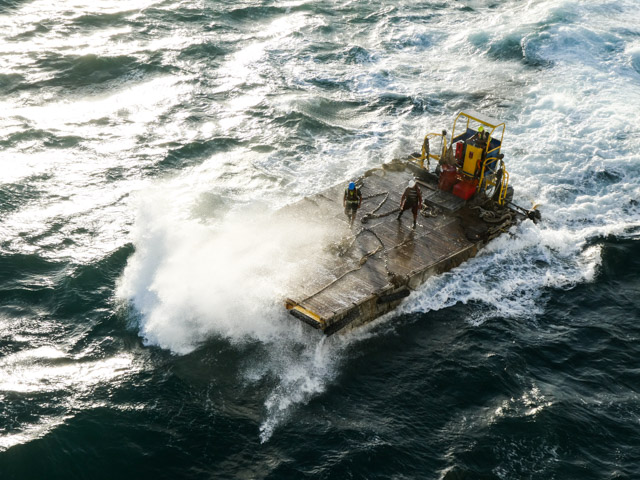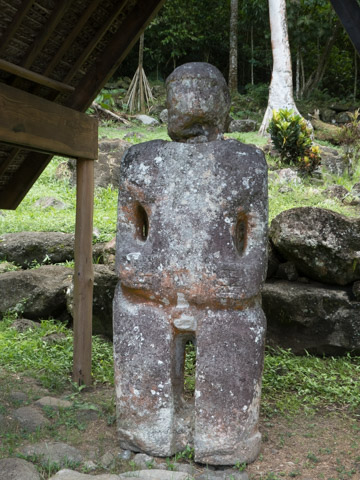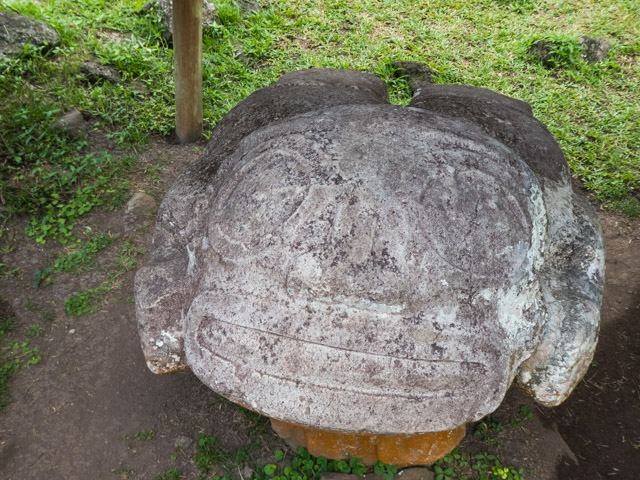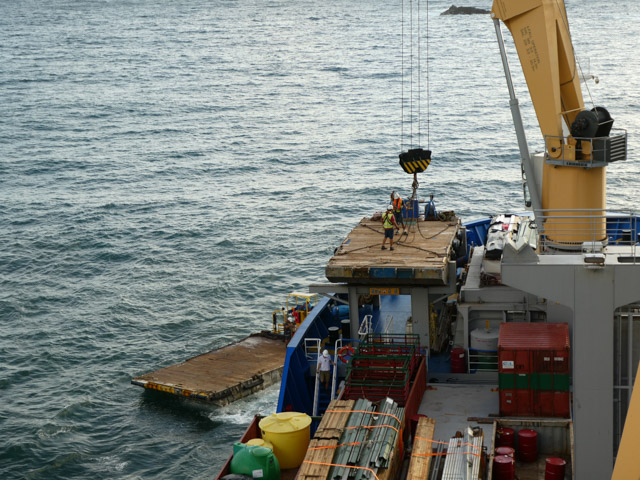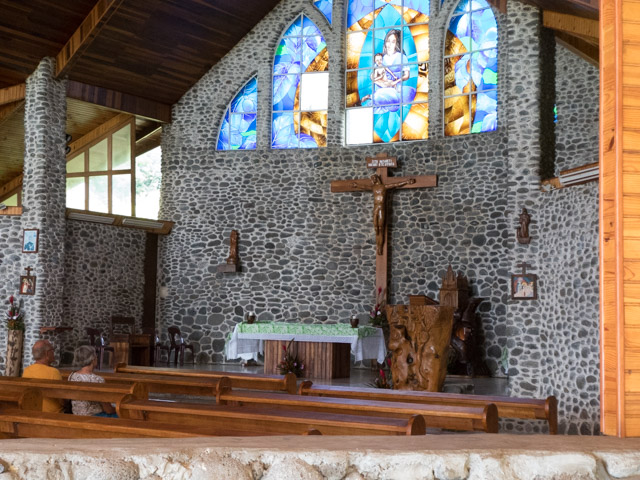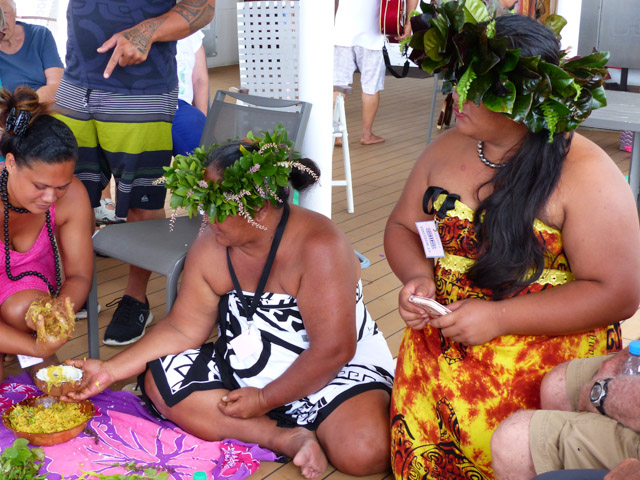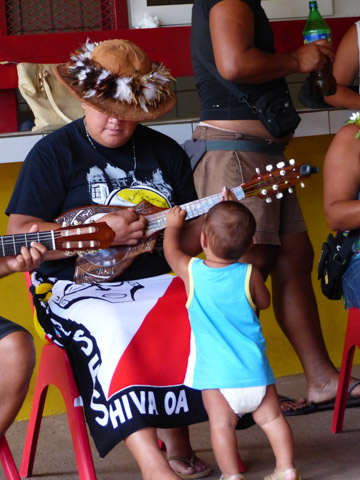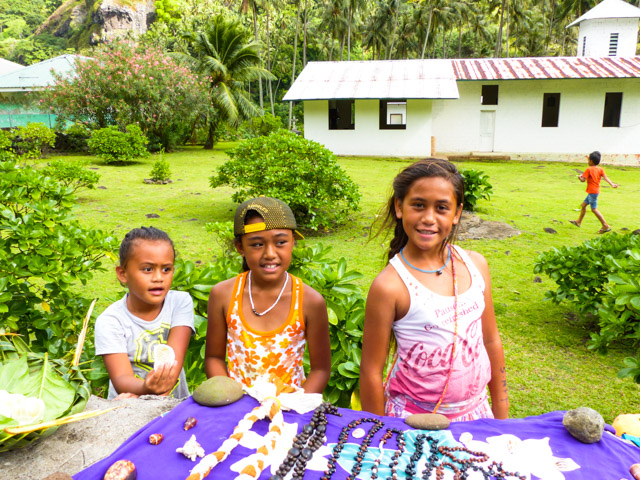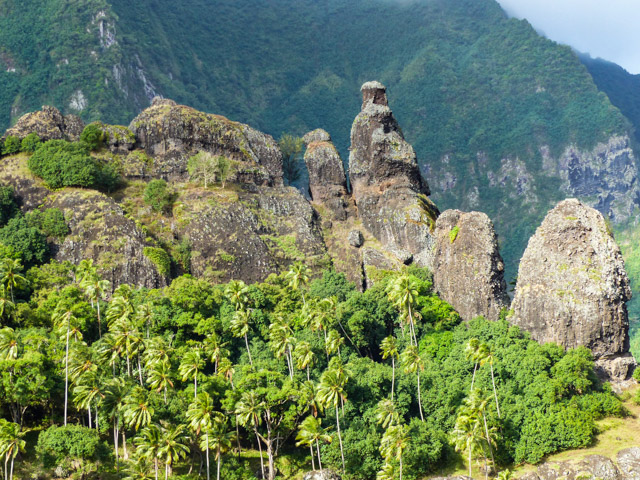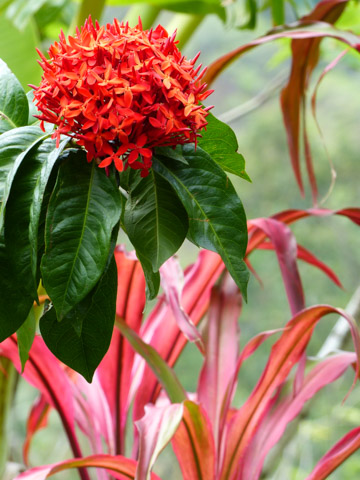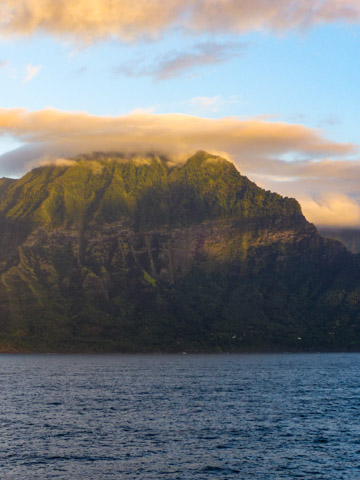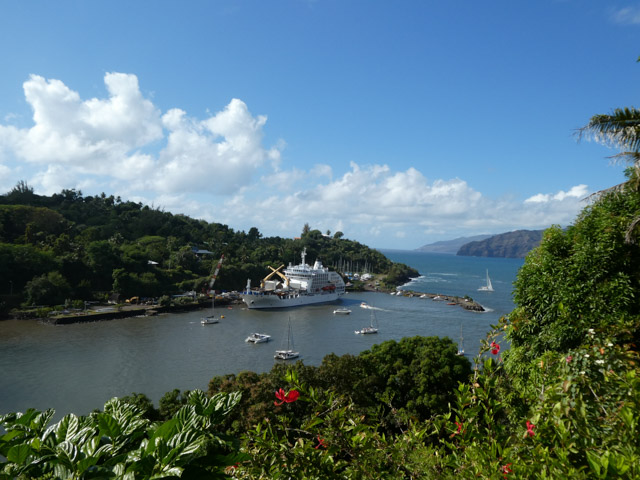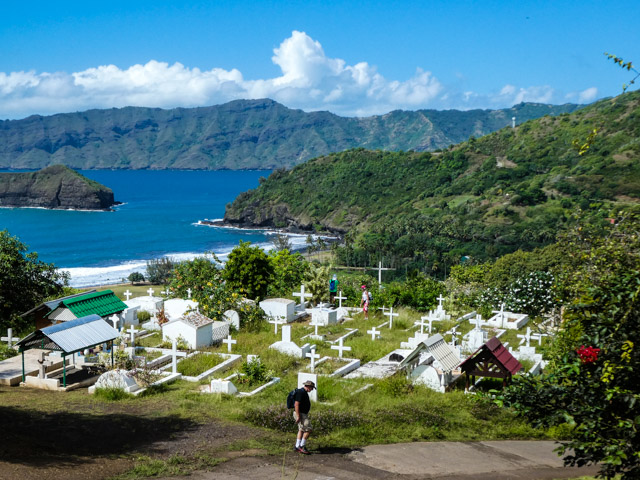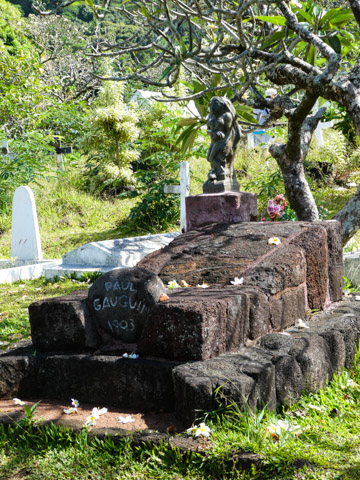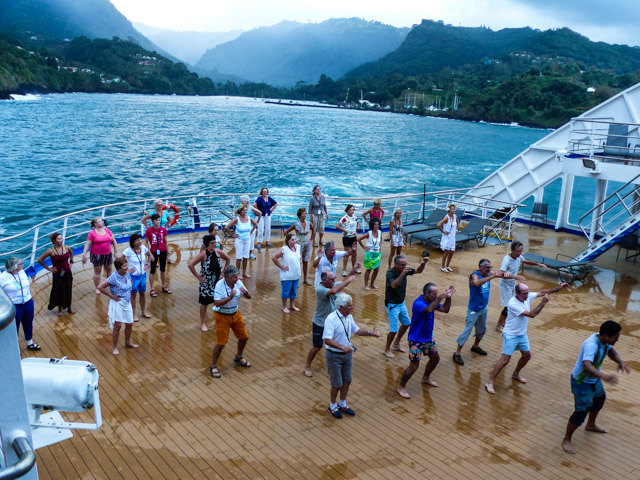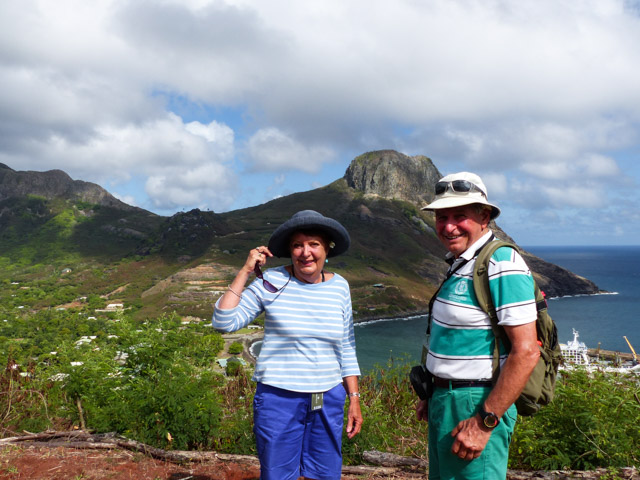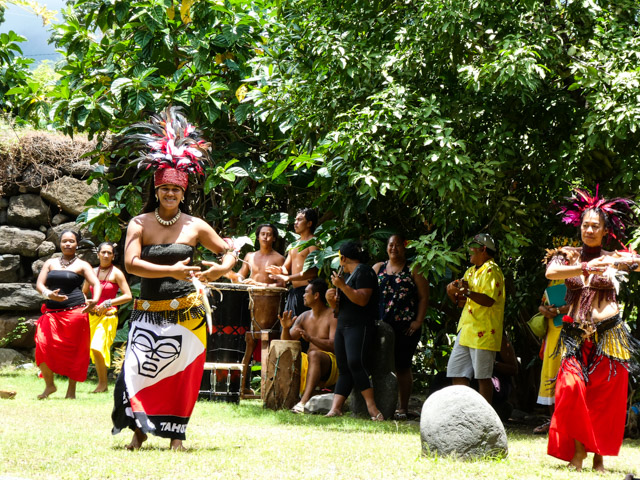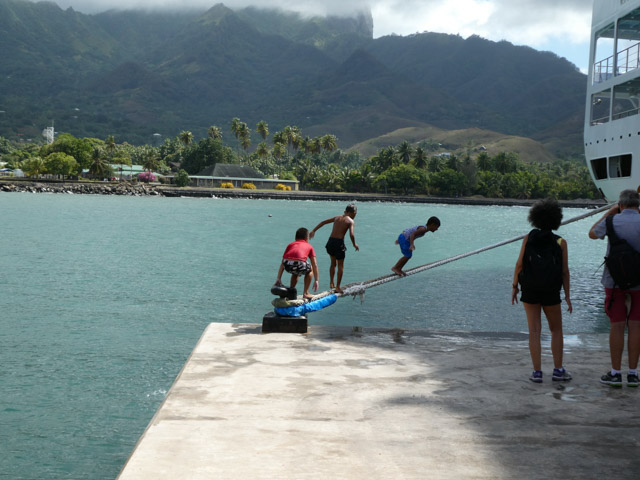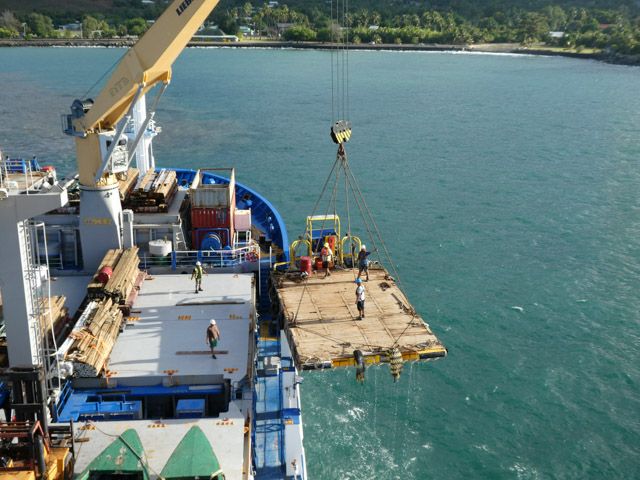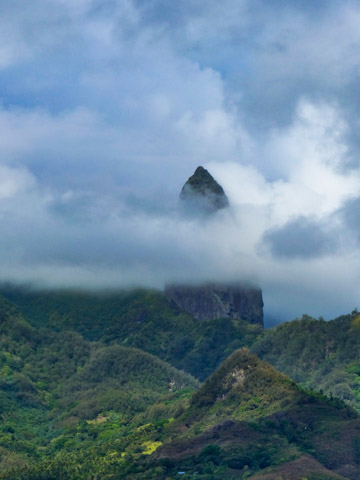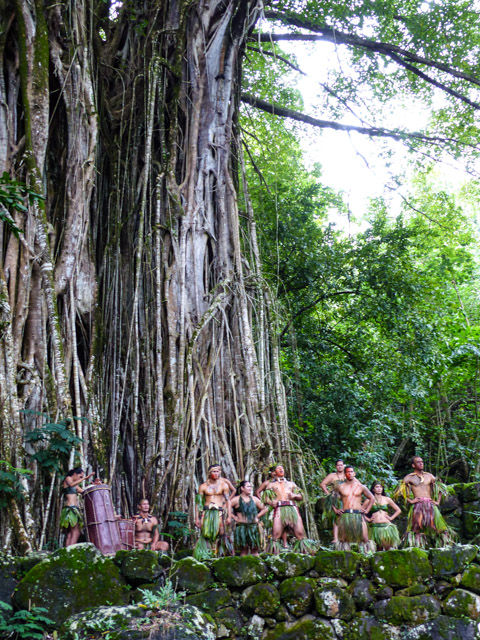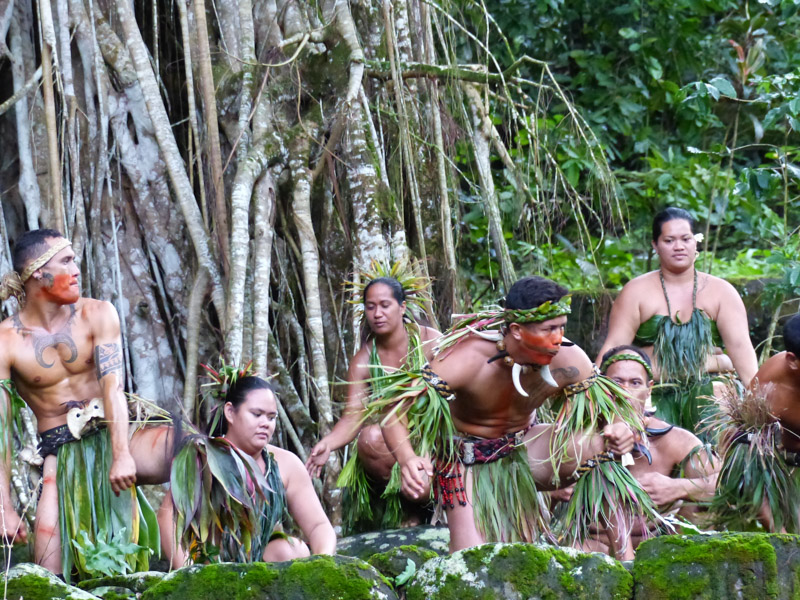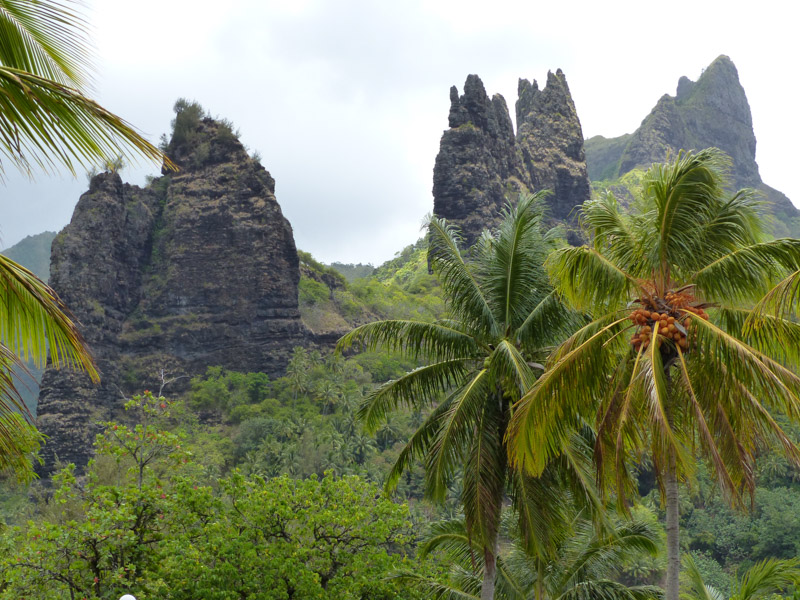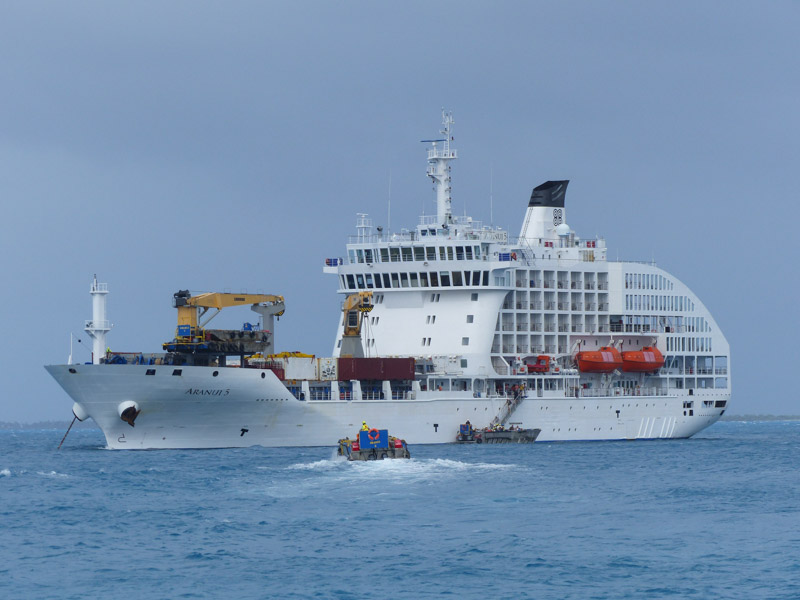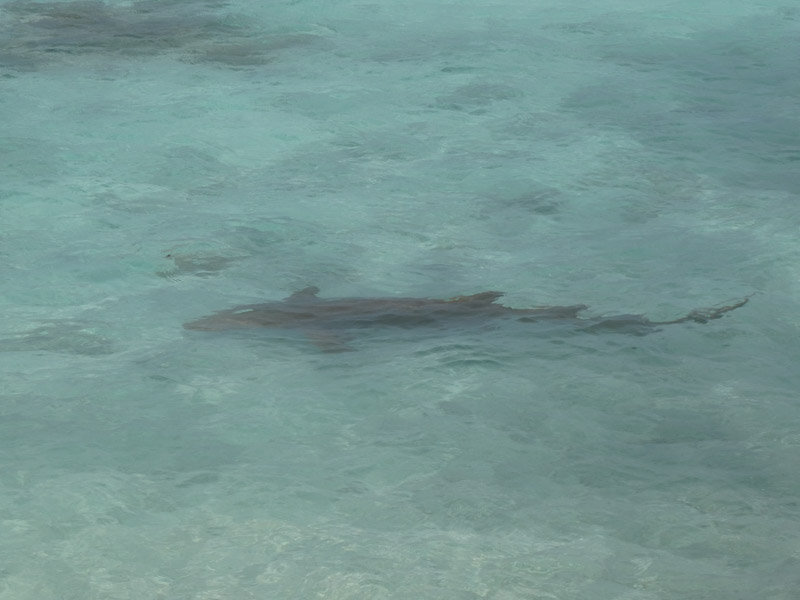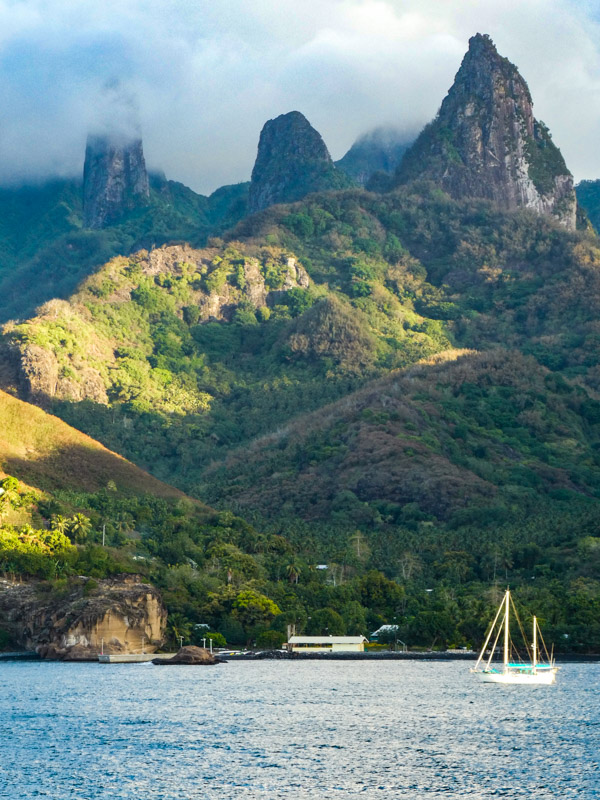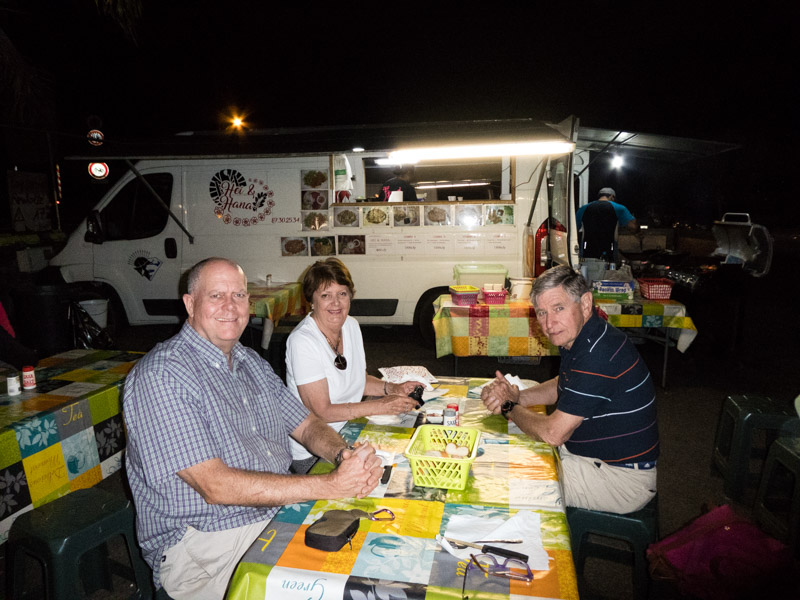The Aranui 5 is 126 metres long or about 413 feet. The harbour of Vaipaee on the island of Ua Huka is about 50 metres wider than Aranui is long. Docking a ship in these conditions is not for the faint of heart. The Aranui crew put on a complete spectacle for us, bringing their best game to dock in Vaipaee.
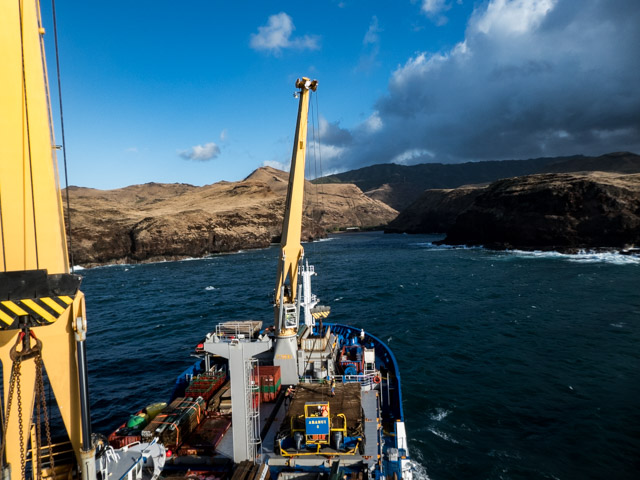
Heading into the narrow bay, Aranui drops the anchor then pivots 180 degrees bringing the stern into place.
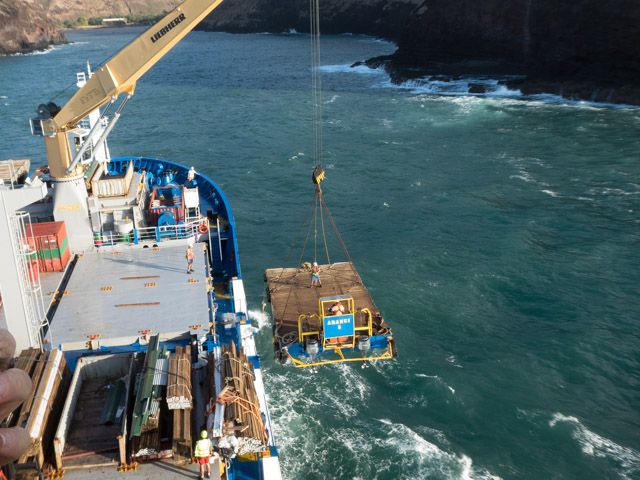
The barge is in place and the long boats with the shore crew are in the water, taking the stern lines to the headlands either side of the bay. The waves are substantial enough that the men might take more than one attempt to jump ashore.
Getting stern lines out has more to do with tying down a bucking bronco than a tying into a dock.
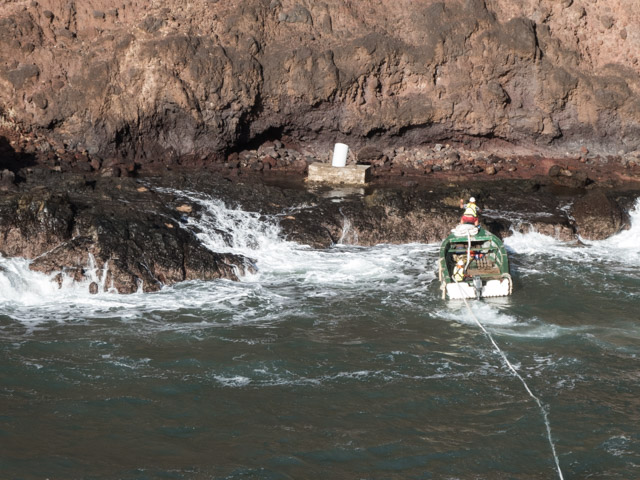
Disembarking the passengers is equally exciting. (No photos because of the roughness.) We were wearing wet shoes today because as you walk downstairs to the passenger barge, the water is spilling in up to your knees and the crew are lifting you in. Trust is the word. You stand in front of four or five muscular men who are gauging the thrust of the barge and waiting for the entrance to the barge to line up with the entrance of the ship. All you can do is trust them to get you on the barge intact and sit down immediately once you are on this bucking bronco. Oh, and keep your arms and hands inside the barge. This is an adrenalin start to your morning.
We go to a food producing Botanical Gardens and see orchards of citrus and breadfruit. We hear about native trees and also about how much food can be produced on the islands. Some items may have been introduced thousands of years ago with the first visitors.
The 4 x 4’s then take us to the Handicraft centre and Sea Museum in Hane Village. The models are rustically exquisite and the carvings are intricate.
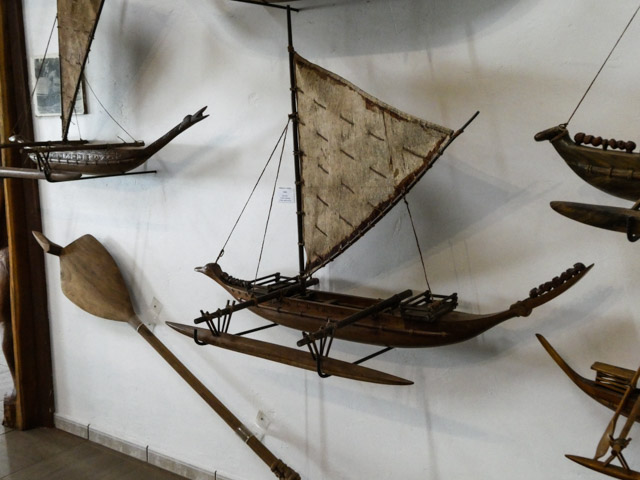
After lunch, we hiked up to a meeting point and our guide told us the history of the people here. The views were spectacular over the coast.
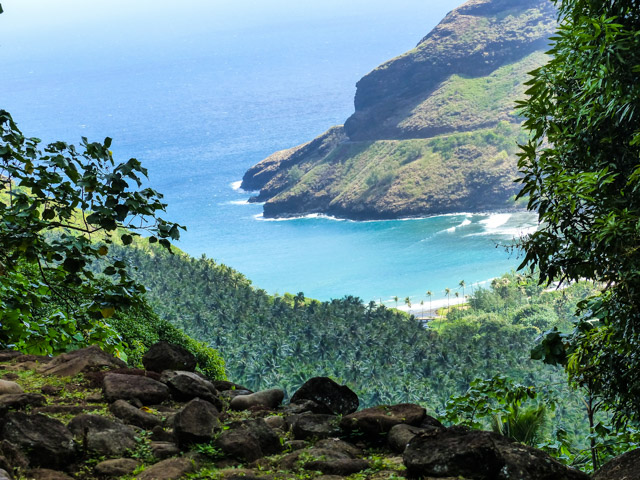
Ua Huka has miles of winding road, which you can see hugging the coastline. What you don’t see are the wild horses and goats that are often near the road. The goats are wild and harvested by locals for milk or meat. They are not indigenous animals but the locals are happy for the food source. Since the Aranui is the main avenue for supplies to arrive on the island, having a ready supply of dairy and meat seems more than reasonable.
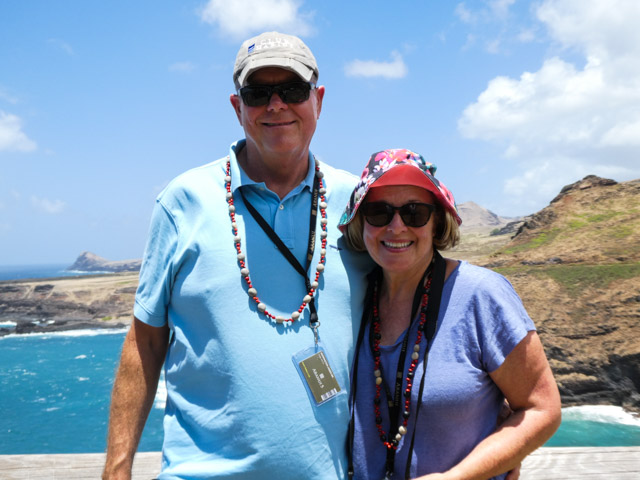
I had one favourite view which I found just splendid and reminiscent of the California coastline.
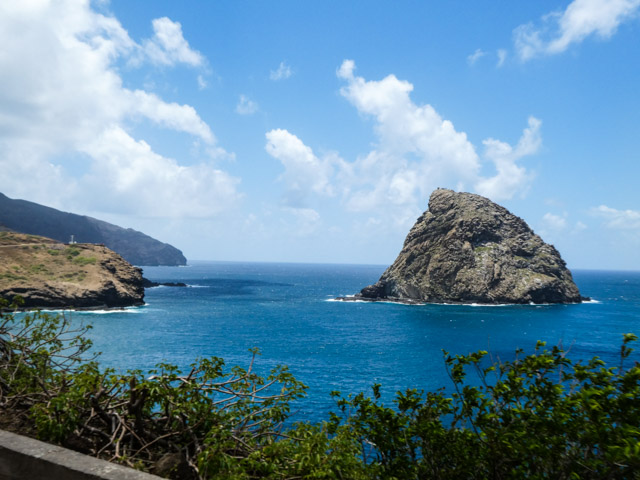
Last photo, of the bargemen negotiating Aranui out of Vaipaee Bay. Discernible difference between Vaipaee Bay and Hokatu, isn’t there?
